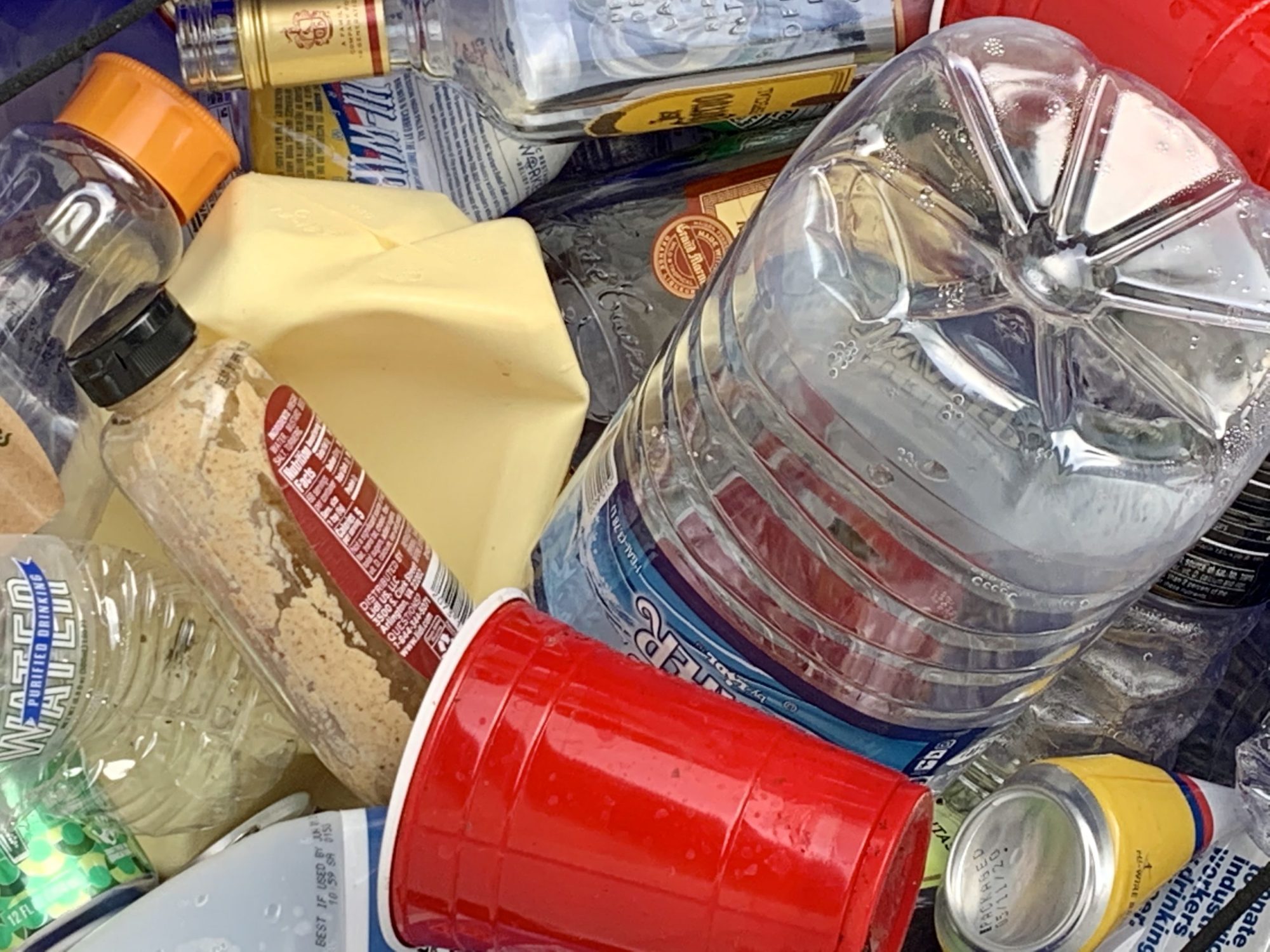
Each year around 11 million metric tons of plastic enters the world’s oceans, but the introduction of plastic pollution policies came to a halt in 2020, when the COVID-19 pandemic emerged. During this time, there has been an increase in single-use and disposable plastics for personal protective equipment and packaging, and medical waste, new data suggests.
The Annual Trends in Plastics Policy: A Brief released Feb. 25 by Duke’s Nicholas Institute for Environmental Policy Solutions updates its 2020 Plastics Policy Inventory, a searchable, multilanguage database of hundreds of public policy documents targeting plastic pollution around the globe. The 2020 inventory showed a steady increase in policies being introduced from 2000 until 2019.
Supporter Spotlight

“The overall effect of the ongoing pandemic on plastic pollution and policy implementation is not fully understood yet, but a few findings are beginning to percolate,” said the brief’s lead author, Rachel Karasik, policy associate at the Nicholas Institute, in a statement.
“The increase in plastic consumption and waste resulting from the pandemic is happening at the same time that many governments are reversing or pausing implementation of plastics policies,” she continued. “Some countries, however, have continued to address plastic pollution by passing policies that are more comprehensive — for example, targeting single-use plastics other than plastic bags.”
The research suggests that, as of 2021, more than 8 million tons of pandemic-associated plastic waste had been generated globally, with more than 25,000 tons entering the oceans, a figure that researchers say is likely to grow.
Despite the stall in public policy to combat plastic pollution on a national and international level since the pandemic began, efforts in North Carolina have continued and are building momentum, Lisa Rider, executive director of the Coastal Carolina Riverwatch, told Coastal Review. Coastal Carolina Riverwatch serves 320 miles of rivers and streams, including the White Oak River and the New River.
“Both single-use plastic and ADVs (abandoned and derelict vessels) are seeing policy improvement momentum on the local level, and we hope that trend elevates to statewide support for policies that work to reduce plastic waste, improve infrastructure and to enforce current regulatory measures that prevent marine debris,” Rider said.
Supporter Spotlight
About the Inventory
The 2020 Plastics Policy Inventory, which listed about 300 policies, was created to support the momentum to address plastic pollution by tracking policies introduced at the subnational, national and international levels from 2000 to 2019, officials said.
The team continued to work on the inventory over the past few years and now has more than 570 public policies listed. This brief is intended to be the first of many annual updates tracking worldwide trends and gaps in government responses to the problem.
Karasik told Coastal Review last week that the plastic policy inventory allows users to learn how governments are responding to plastic pollution.
This can help them better understand the types of plastic that become pollution “and the levers that can be pulled to mitigate their fate as marine pollutants. Users of the inventory can see where and how governments are targeting plastic, including assessing which plastic types and stages of the life cycle are targeted, and which instruments are used by governments,” Karasik said.
North Carolina and the global plastic pollution crisis
Though the inventory doesn’t focus on North Carolina, plastic pollution still a very real problem in the state.
“The plastic pollution crisis is global, so a piece of plastic waste that ends up on a North Carolina shore could have been produced or consumed in another country, just like a piece of plastic waste that is generated by a North Carolinian can end up on the shore of other countries,” Karasik explained. Because of this, “government responses to plastic pollution would ideally be comprehensive and coordinated, and the inventory is a tool that allows users to determine if they are.”

Karasik said that for coastal North Carolina the findings in the update mean two things.
“One is that plastic waste continues to increase, in part due to the ongoing pandemic, and the collective government response to that problem is not meeting the moment,” she said.
She’s hopeful that nongovernment organizations, area businesses and community groups “can help contribute to solve the problem by eliminating or limiting unnecessary single-use plastics, hosting regular cleanups in waterways, clearly communicating the risks associated with plastic consumption and disposal, and making reusable alternatives accessible for all, especially folks in underserved and low-wealth communities — especially if plastic waste is accumulating in coastal North Carolina.”
Karasick said the other point is that the inventory can be a resource for coastal North Carolinians to see what other governments, such as Virginia’s, are doing in similar situations to address plastic pollution so that they can begin to advocate for similar policies in this state.
“We are hoping that the inventory can cut down on the time it takes for policy makers and advocates to identify exemplary policies that they want passed in North Carolina, and they can fight for them,” she said.
What’s happening at the state level
Karasik noted that in North Carolina local governments cannot easily pass local laws to address plastic pollution. In 2017, Gov. Roy Cooper’s veto of House Bill 56 that repealed the eight-year plastic bag ban on the Outer Banks was overridden by the legislature. Earlier this year, she noted, there was a public push in Durham to pass an ordinance to charge a fee per plastic bag, which would not need General Assembly approval.
“Therefore, in the realm of government responses to the crisis – beyond waste management laws, which are local – those of us in North Carolina may have to rely on national laws to move us forward in addressing the plastic pollution crisis for the foreseeable future,” she said. “To be sure, there are ongoing efforts by people and groups all over the state to try to pass ordinances to reduce plastic pollution, but it is important to acknowledge the challenges here in North Carolina to passing increasingly progressive and comprehensive plastics policies within and across the state.”
There is an opportunity to learn what’s happening in North Carolina next month through the North Carolina Marine Debris Symposium. Under the direction of Coastal Carolina Riverwatch, the symposium is an annual event planned for October of this year focusing on recent developments, program ideas and best management practices for marine debris prevention, education and removal.
Organizers of the Marine Debris Symposium have expanded the symposium’s reach by adding a spring workshop focused on North Carolina plastic policies.

The NC Plastic Policy Workshop set for April 29 is to provide local planners and elected officials with policies for combating single-use plastics and abandoned derelict vessels, Rider said. The workshop includes hands-on policy development with the intent that what is learned is brought back to attendees’ communities. This limited-ticket, $15 workshop is being hosted in partnership with the Duke Law and Policy Center.
Rider said there also is a new statewide effort, the NC Plastic Reduction Coalition, that includes dozens of organizations working on plastic reduction and removal efforts from the mountains to the coast. “This group meets twice a month and most recently lead a statewide campaign aimed to bring awareness to legislators and highlight removal and prevention efforts,’ she said.
Rider also mentioned that according to the 2021 Water Quality for Fisheries Program, both recreational and commercial fisheries representatives identified plastic pollution as one of the top five water quality concerns that impact coastal fisheries in North Carolina.
And on the international level
The United Nations Environment Assembly called Wednesday a “historic day in the campaign to beat plastic pollution.” During the fifth session of the United Nations Environment Assembly in Nairobi, Kenya, heads of State, ministers of environment and other representatives endorsed the End Plastic Pollution resolution and put in motion an international, legally binding agreement.
“Against the backdrop of geopolitical turmoil, the UN Environment Assembly shows multilateral cooperation at its best,” said Espen Barth Eide, fifth session of the United Nations Environment Assembly president and Norway’s minister for climate and the environment, in a statement. “Plastic pollution has grown into an epidemic. With today’s resolution we are officially on track for a cure.”
The resolution establishes an Intergovernmental Negotiating Committee that will begin its work this year. The committee is expected to present the agreement by 2024, “which would reflect diverse alternatives to address the full lifecycle of plastics, the design of reusable and recyclable products and materials, and the need for enhanced international collaboration to facilitate access to technology, capacity building and scientific and technical cooperation,” officials said.
Karasik told Coastal Review that it was encouraging to see the international policymaking community convening to target plastic pollution with legally binding agreements.
“Our research and that of our peers has consistently demonstrated that there are gaps in the collective governance of plastics at each stage of the life cycle, that efforts to combat this crisis are often not comprehensive and coordinated, and that plastic pollution and production continues to outpace waste management capacity,” she said. “I am hopeful that this agreement fills those gaps and encourages continued momentum by governments, industry players, and communities to reduce plastic production, trade, consumption, and disposal — and holds them accountable if they fall short. We hope the Plastics Policy Inventory can provide insights that will help achieve and monitor compliance with the agreement’s goals.”
The Nicholas Institute provided the following list of other findings in the brief:
- Regulations, such as bans on the use of specific types of plastics, tend to be the policy tool favored by governments for addressing plastic pollution. Research shows that these policies, as well as taxes and fees, are most effective when paired with public education or outreach campaigns, but these approaches are rarely coupled on the national level.
- National policies have increasingly targeted plastic bags and other single-use macroplastics, or larger pieces of plastic, since 2017. There is also movement toward considering the benefits and harms of substituting fossil-fuel-based, single-use plastics with biodegradable or compostable ones.
- Growing scientific evidence shows that microplastics, including microbeads in toothpaste, clothing fibers and tire abrasions, have a significant ecological impact. Yet few national policies exist to address them, and there “appears to be little to no momentum in acting” at the national level.
- Policies targeting the production and use of plastics outnumber policies targeting the management of plastic waste.
- Nearly 130 countries have at least one national or subnational policy documented in the inventory. The policies are written in 34 languages.
“We really encourage folks using the inventory to pull out and review policy documents within the inventory — we have over 570 — and read them for themselves to understand what governments are and are not doing to approach plastic pollution,” Karasik told Coastal Review, adding the public is encouraged to reach out if they know of policies that not in the inventory or to answer questions.







